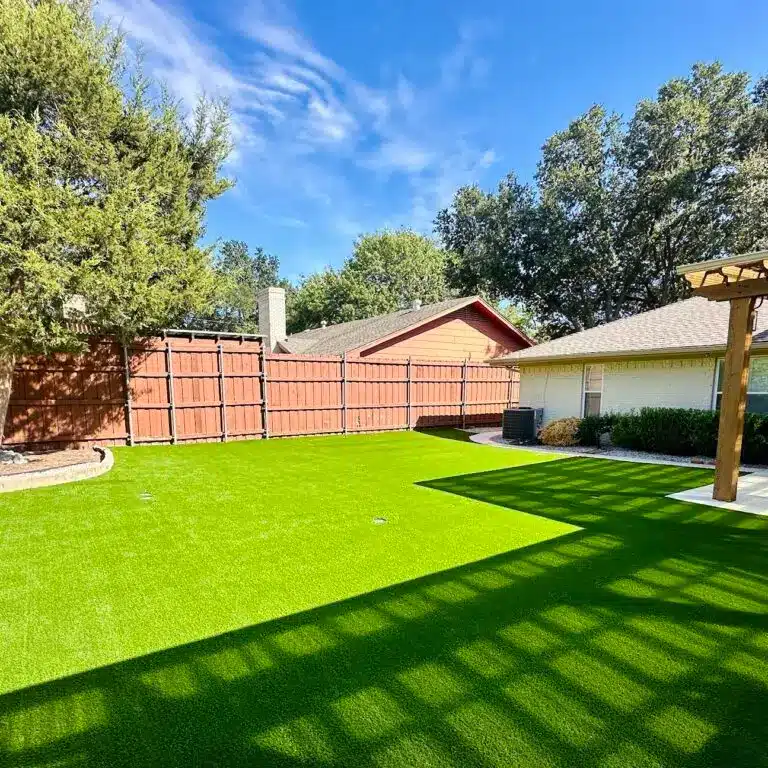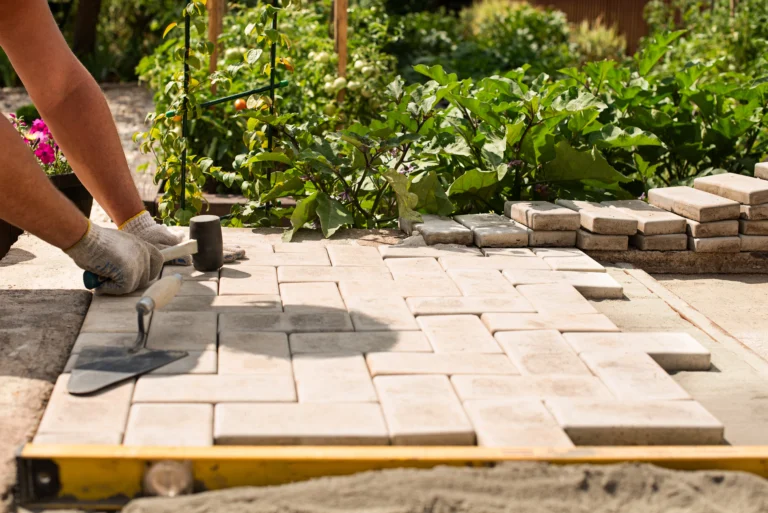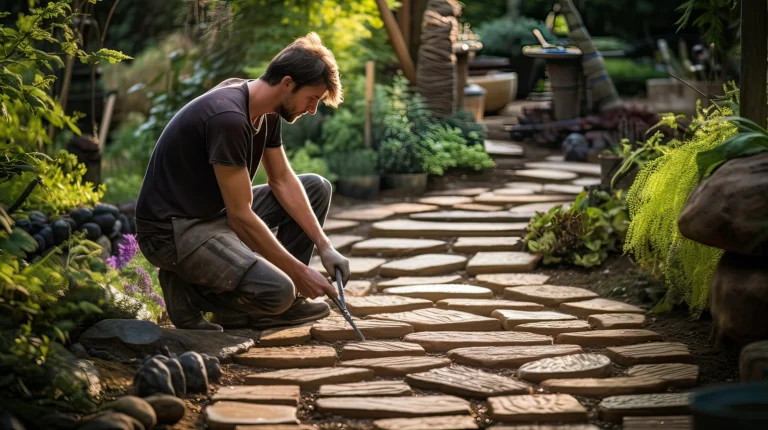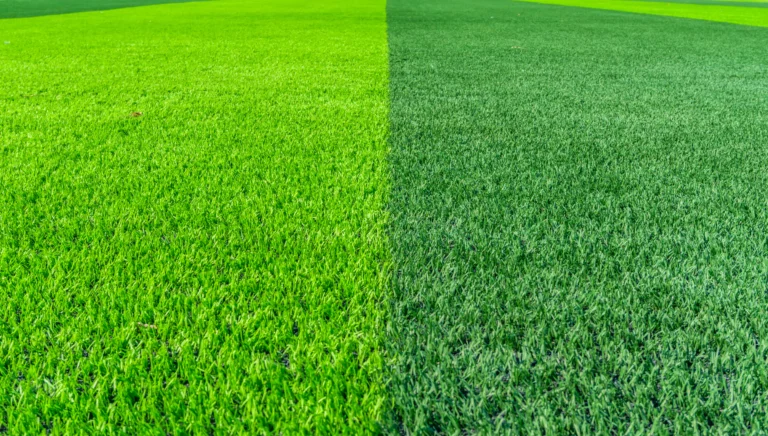Why Synthetic Grass and Pavers Are Ideal for Low-Maintenance Landscaping
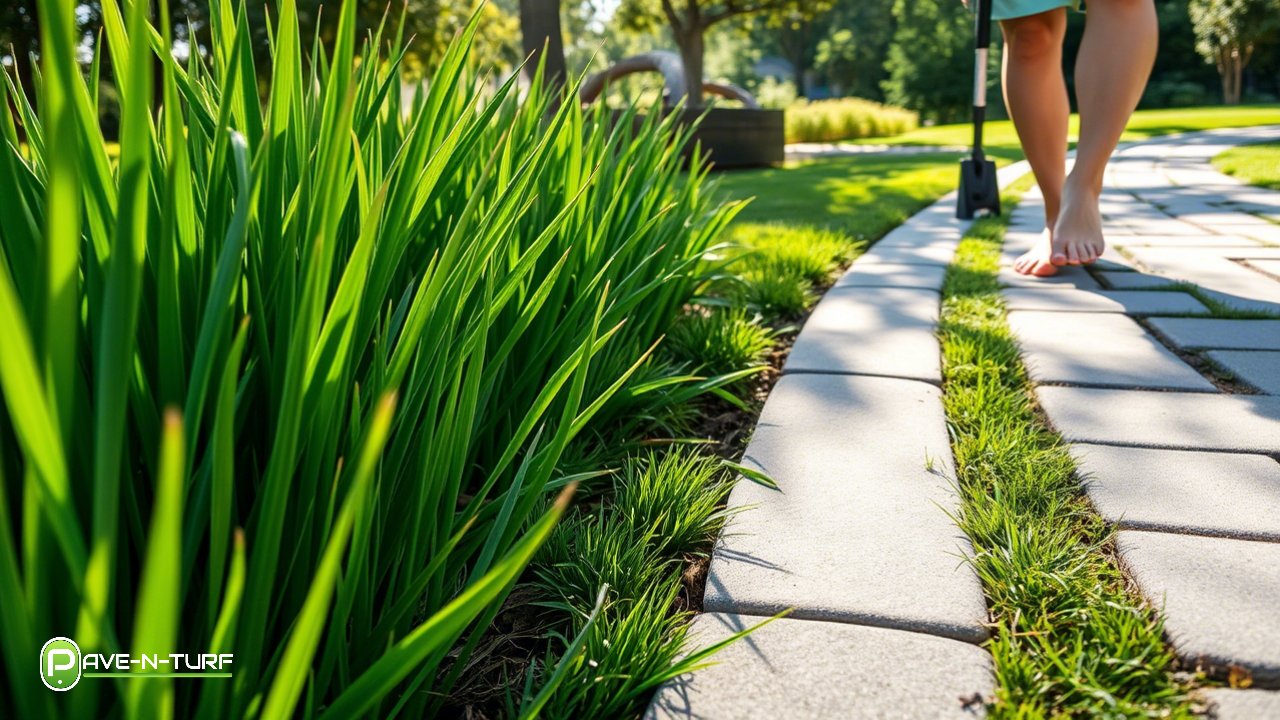
Introduction
Today, homeowners want intelligent options that allow them to enjoy stunning landscapes without all the work. Clearly, synthetic grass and pavers are being used to change the entire look of yards, patios, and driveways into clean, functional, and durable outdoor spaces with no mowing weekly, or seasonal planting. In this article, we’ll discuss why synthetic grass and pavers can provide a low-maintenance landscape, without sacrificing the potential for a polished, useable, and modern outdoor space.
The Growth of Low-Maintenance Landscaping
People are busier than ever, and nobody wants to spend the weekends pulling weeds, or fixing a muddy lawn. Traditional grass is a constant chore that demands regular upkeep, including watering, containing weeds, fertilizing, mowing, and patching dead spots. It’s no different with concrete slabs, that crack and stain over time, resulting in less and less aesthetic value.
As a result, homeowners and professionals have searched for alternatives. This is where synthetic grass and pavers come into play they are low-maintenance landscape elements that provide high design value!
Benefits of Synthetic Grass in Landscaping
1. Zero Water Waste
There is no need for irrigation when turf is laid down. It is perfect for regions with watering restrictions, or areas prone to drought. Just put it down and forget about the sprinkler schedule.
2. Always Green, All Year Round
Unlike natural lawns that brown and die in the winter and dry out or burn in the summer, turf product looks the same in all seasons. The shiny green of your new lawn, is picture prefect in any season, rain or shine or summer sun.
3. Kid & Pet Friendly
Most modern synthetic grass options are non-toxic and hypoallergenic, which makes it completely safe for kids and pets. No muddy paws, no pesticides just kids and pets playing in soft grassy turf and refreshing water to keep warm while playing.
4. Durability That Lasts Years
In each of these synthetic products, quality will be up to each company. Because it is synthetic, the surface can take heavy foot traffic, UV action from the sun, and rain. An installed lawn that is of quality will withstand 10–15 years of life with minimal effort on your behalf. Depending on the landscaping, artificial turf could be a beneficial option to consider.
Advantages of Pavers in Outdoor Design
1. Limitless Design Options
Pavers are available in many materials concrete, stone, brick and colors. Pavers offer flexibility in design patterns, whether it be a sleek driveway, meandering garden path, or an intimate patio area.
2. Easy Repairs
Unlike poured concrete, individual pavers can be replaced if they crack or shift. This makes maintenance easy and affordable in the long run.
3. Slip-Resistant & Weather-Proof
Many pavers have a texture that can deliver grip when wet, making them safe in pool areas and wet weather. They also will tend not to absorb heat, so you won’t burn your feet walking barefoot when it’s hot out.
Combining Synthetic Grass and Pavers: A Perfect Match
When used together, synthetic grass and pavers create a dynamic and balanced outdoor look. Turf softens the look of hardscapes, while pavers provide structure and functionality. This combo is ideal for:
- Driveways with turf strips
- Grid-style patios
- Pathways edged with synthetic lawn
- Garden zones broken up with paving stones
It’s both practical and elegant, giving your outdoor space the best of both worlds.
Applications That Add Value and Save Time
Let’s look at where synthetic grass and pavers work best:
Front Yards
Upgrade curb appeal with paver walkways and lush green turf that never browns.
Backyards
Design an entertainment-ready space with turf zones for seating and games, surrounded by stylish pavers.
Pet Areas
Create low-maintenance zones with artificial turf that resists digging, odors, and messes.
Side Alleys or Utility Areas
Forget dirt patches use turf and pavers to make narrow spaces both functional and attractive.
Tips for a Successful Installation
To get the most out of your synthetic grass and pavers, consider the following:
- Proper Base Prep: Both turf and pavers need a well-compacted sub-base for stability.
- Drainage Planning: Good drainage prevents pooling and extends lifespan.
- Professional Installation: Hiring a professional in turf and paver installation ensures a polished finish and long-lasting results.
- Pick Quality Materials: Don’t go cheap on turf UV protection, blade shape, and backing material matter more than you think.
Trust Professionals for Turf and Paving Solutions
While DIY can be tempting, working with a professional in turf and paver installation ensures the project is executed properly from the start. They understand the technical aspects like drainage planning, sub-base prep, slope grading, and alignment that most homeowners overlook. Whether you’re going for a modern patio or a pet-friendly backyard, a seasoned expert will help you select the right turf and paving solutions to suit your landscape’s needs and your long-term goals. Plus, you’ll save time and avoid costly mistakes definitely worth the investment!
Conclusion
If you’re done dealing with brown spots, muddy shoes, and constant yard work, then you need to rethink your outdoor design. Synthetic grass and pavers create a green, clean, and low-maintenance option that applies to modern and traditional landscapes alike.
Combining synthetic grass and pavers offers everything from functionality to curb appeal and is not just a passing trend, but rather a smart, long-lasting solution. Plus, as homeowners continue to evolve toward sustainable, easy living solutions, this combination is a winner above the rest.
FAQ: Synthetic Grass and Pavers
Q1: Can synthetic grass be installed on uneven ground?
A1: Yes, but the ground must be leveled and compacted properly first. This ensures drainage and avoids future dips or wrinkles.
Q2: Do pavers shift over time?
A2: If not installed on a solid, compacted base, yes. But with proper installation and edge restraints, pavers will stay in place for many years.
Q3: What’s the average lifespan of synthetic grass?
A3: Most high-quality synthetic lawns last between 10 to 15 years, depending on traffic and exposure to weather.
Q4: Is this combo good for small spaces too?
A4: Absolutely! Small patios, side yards, and even balconies benefit from the visual texture and usability of synthetic grass and pavers.


